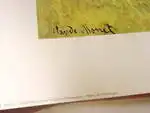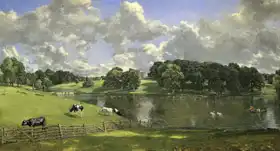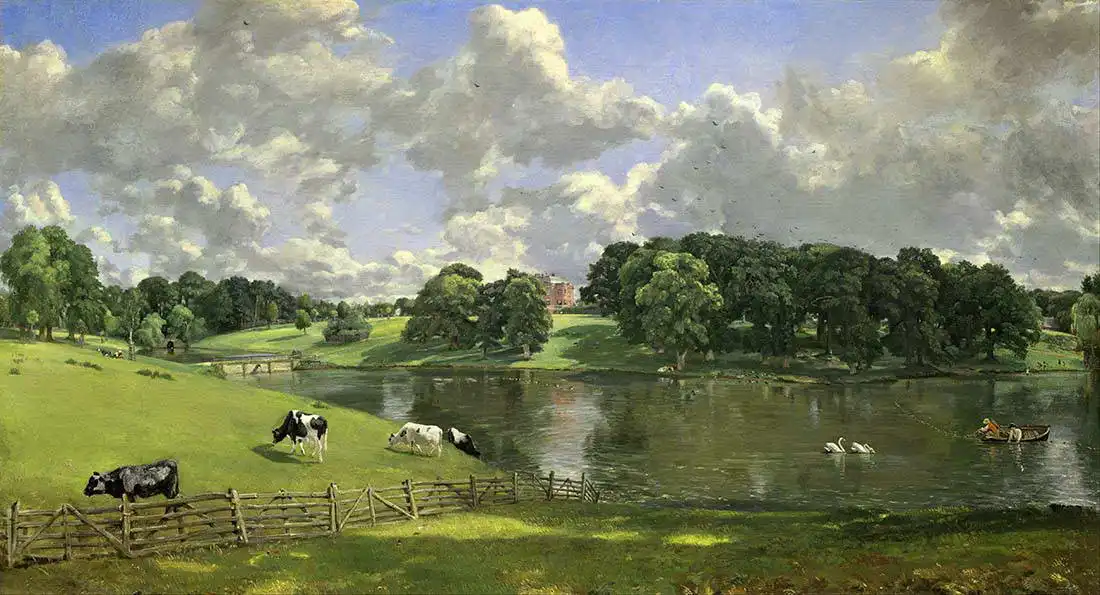About this finishing
Print. The image is printed on the top quality 10-ink HP Z9PS printer on HP matte 270 g / m2 paper. You can choose any size to an accuracy of 1 cm. A margin of 5 cm around the image is added to the size of the motif.


You can find a detailed description about our finishings
here.
Wivenhoe Park (Essex)
Date:
1816Medium:
oil on canvasLocation:
National Gallery of Art, Washington DC, USAThis painting Constable was forced to paint on commission - which naturally ran counter to his free-spirited nature, as he had to respect the painting's location and perspective. He seized on it the estate of the Rebow family of Essex. The assignment was to depict the family's land as a contribution to the village (that's why the painting is also called Park). The composition is in four quadrants according to the vertical and horizontal axis. The left part is bright and sunny, the right is more in the shade and with a darker sky. The details in the painting, such as the swans or the boat, are not there by chance. They were supposed to show that even a private pond can serve the wider community.
Constable painted picture Wivenhoe Park (Essex) in 1816. Prevailing color of this fine art print is green and its shape is long. This art piece is located in National Gallery of Art, Washington DC, USA. This image is printed on demand - you can choose material, size and finishing.
John Constable (1776 - 1837). English painter during
Romanticism. He was the son of a miller in Suffolk County and since childhood, he dreamed of becoming one of the best landscape painters of the 19th century. At last, painting really became the sole purpose of his existence. In December 1817, he moved to London with his wife, and there the first of their seven children was born. Children then followed almost invariably each year, but it was very difficult and exhausting to feed such a large family. Landscape painting was not recognized nor a much profitable profession in England in the 19th century. John and Mary worked very hard, which later destroyed their health. Despite this, however, gradually the first significant successes arrived. In 1819, John Constable became an associate member of the Royal Academy of Arts.
Two years later, he painted his most famous work
Hay Wagon. He exhibited it in London, but he came to fame in 1824 when this image received the gold medal at the Salon in Paris. The local appraisal was full of recognition, but in England his work was viewed with reserve. A year later, although he was accepted as a full member of the Royal Academy of Arts, he exhibited a grim picture, Hadleigh Castle, which expressed grief over the death of his wife. He entrusted their seven children to a nurse, but he still cared for them very well and conscientiously. A very renowned piece is
Wivenhoe Park of 1816. In 1833, however, he fell ill and was greatly plagued by old age. To conserve his strength, he painted only less demanding watercolours. Finally, Constable died after a stroke in 1837. His paintings were sold for a small amount auction, and his work achieved recognition many years later.



